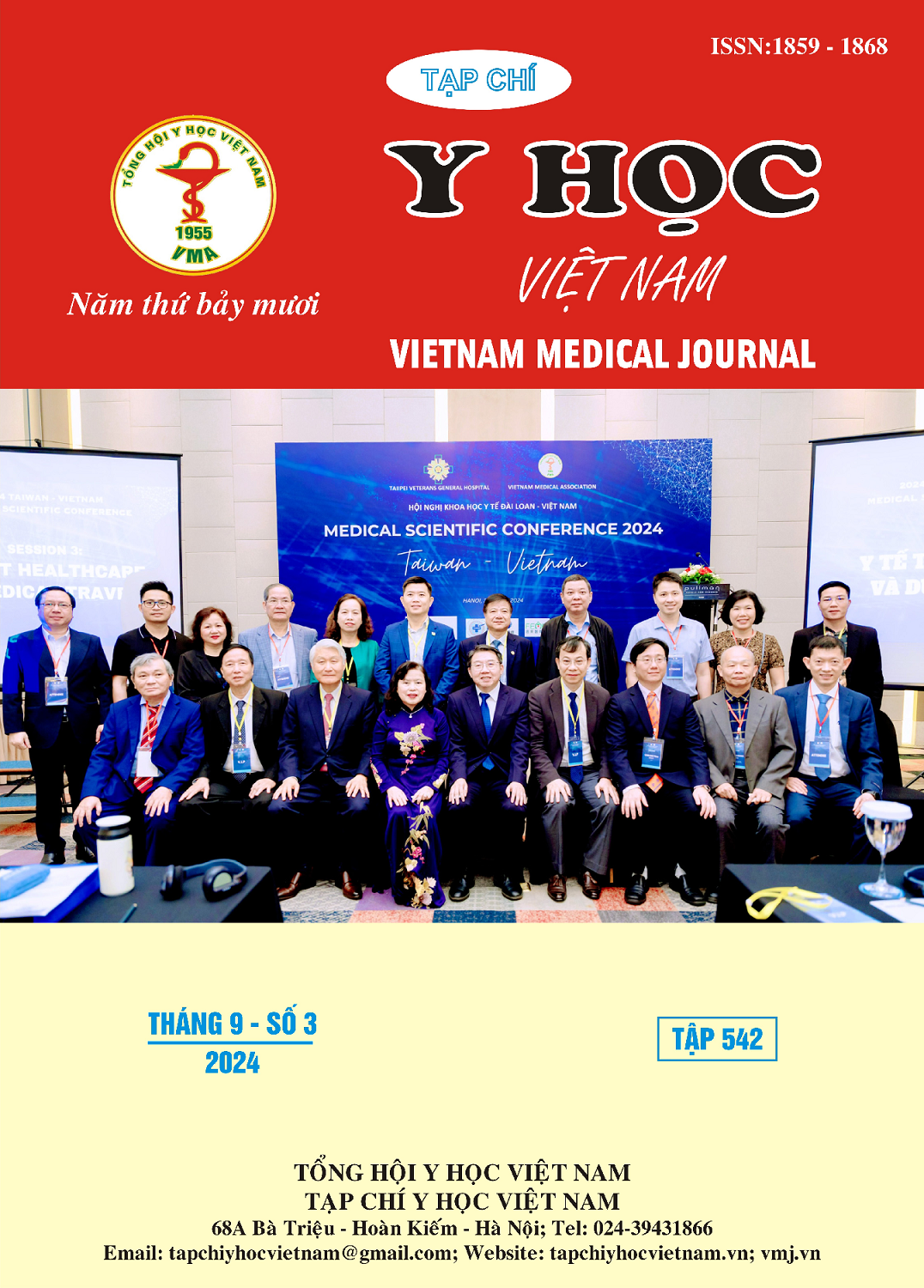CLINICAL FEATURES AND IMAGING DIAGNOSIS IN PATIENTS WITH LUMBAR SPONDYLOLISTHESIS UNDERGOING SURGERY
Main Article Content
Abstract
Objective: Describing the clinical features and paraclinical characteristics of patients with lumbar spondylolisthesis undergoing surgery at Viet Duc Hospital. Objects and Methods: Our study was conducted using a retrospective descriptive research method. Medical records of patients undergoing surgery from June 2021 to June 2022 were reviewed. All clinical symptoms and signs were collected and evaluated. Regarding imaging diagnosis, we assessed parameters on X-ray and magnetic resonance imaging (MRI). Results: There were 73 patients in our study group, with a male-to-female ratio of 1:2 (male: 32.9%, female: 67.1%). Patients aged 50-59 years accounted for the highest proportion at 27.4%. Prominent clinical symptoms included radicular leg pain (95.9%) and claudication (71.2%). The mean VAS scores for back and leg pain were 6.11±0.74 and 4.55±1.5, respectively. The Oswestry Disability Index (ODI) revealed that 60.3% of patients had moderate to severe functional impairment. Physical signs included paraspinal muscle spasm (97.3%), with only 8 out of 73 patients exhibiting motor disorders, dysesthesia, or sensory deficits, most commonly sensory disturbances (57.5%). X-ray showed predominantly isthmic spondylolisthesis in 65.8% of patients, while MRI demonstrated degenerative disc disease at level V in 69.9%. Conclusion: The prominent clinical symptoms of lumbar spondylolisthesis are back pain, radicular leg pain, and neurogenic claudication. X-ray accurately evaluates the spondylolisthesis status, while MRI assesses soft tissue and neural foraminal stenosis.
Article Details
Keywords
Spondylolisthesis, isthmic spondylolisthesis, degenerative spondylolisthesis.
References
2. Herman MJ, Pizzutillo PD. Spondylolysis and spondylolisthesis in the child and adolescent: a new classification. Clin Orthop. 2005;(434):46-54. doi:10.1097/01.blo.0000162992.25677.7b.
3. Burke SM, Safain MG, Kryzanski J, et al. Nerve root anomalies: implications for transforaminal lumbar interbody fusion surgery and a review of the Neidre and Macnab classification system. Neurosurg Focus. 2013;35(2):E9. doi:10.3171/2013.2.FOCUS1349
4. Hardenbrook M, Lombardo S, Wilson MC, et al. The anatomic rationale for transforaminal endoscopic interbody fusion: a cadaveric analysis. Neurosurg Focus. 2016;40(2):E12. doi:10.3171/2015.10. FOCUS15389
5. Lê Ngọc Quang (2013. Nghiên cứu kết quả phẫu thuật bắt vít chân cung tối thiểu có sử dụng ống banh CASPAR điều trị trượt đốt sống thắt lưng một tầng. Luận án chuyên khoa II, Học viện Quân y.
6. Dương Thanh Tùng (2020). Nghiên cứu điều trị trượt đốt sống đoạn thắt lưng cùng một tầng bằng phẫu thuật vít cuống cung qua da và ghép xương liên thân đốt. Luận án tiến sĩ Y học, Học viện Quân y.
7. Thornhill BA, Green DJ, Schoenfeld AH. Imaging Techniques for the Diagnosis of Spondylolisthesis. In: Wollowick AL, Sarwahi V, eds. Spondylolisthesis: Diagnosis, Non-Surgical Management, and Surgical Techniques. Springer US; 2015:59-94. doi:10.1007/978-1-4899-7575-1_6
8. Johnsen LG, Brinckmann P, Hellum C, et al. Segmental mobility, disc height and patient-reported outcomes after surgery for degenerative disc disease: a prospective randomised trial comparing disc replacement and multidisciplinary rehabilitation. Bone Jt J. 2013;95-B(1):81-89. doi:10. 1302/0301-620X.95B1.29829
9. Vaccaro AR, Bono CM, eds. Minimally Invasive Spine Surgery. 1st edition. CRC Press; 2007.
10. Boos N, Aebi M, eds. Spinal Disorders: Fundamentals of Diagnosis and Treatment. Springer-Verlag; 2008. doi:10.1007/978-3-540-69091-7


